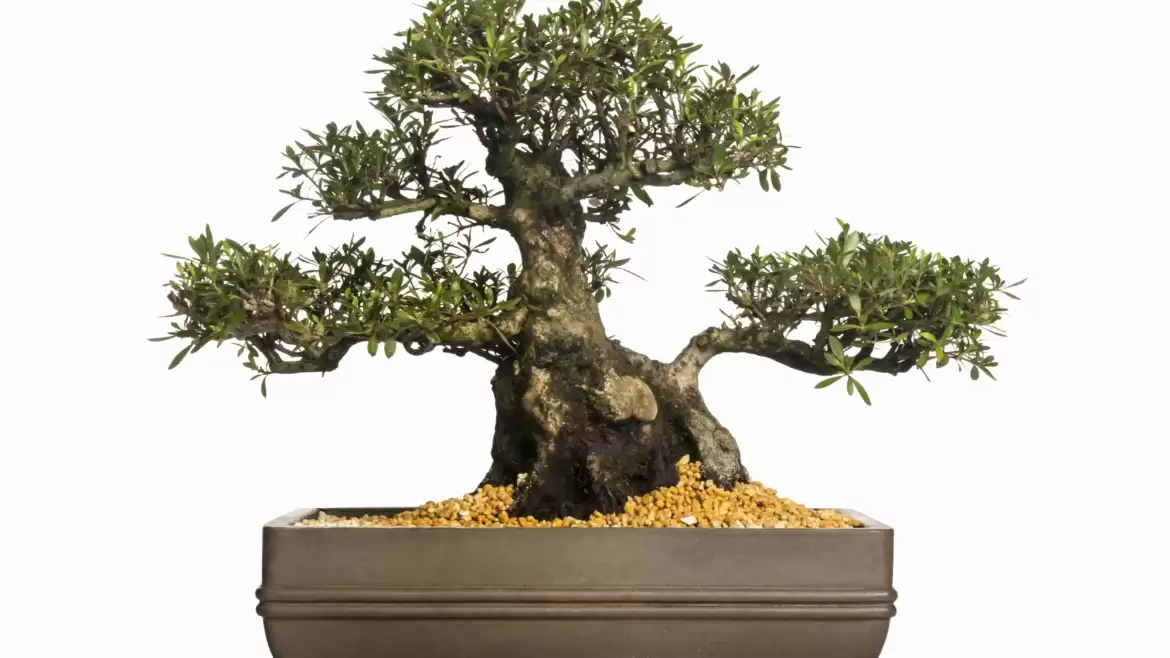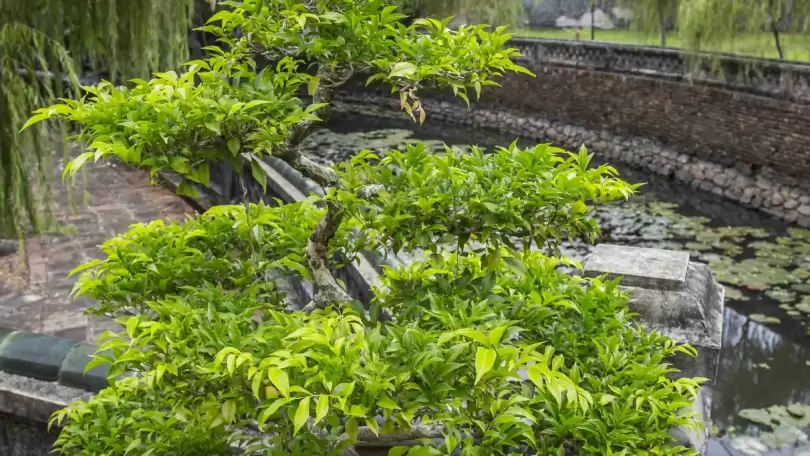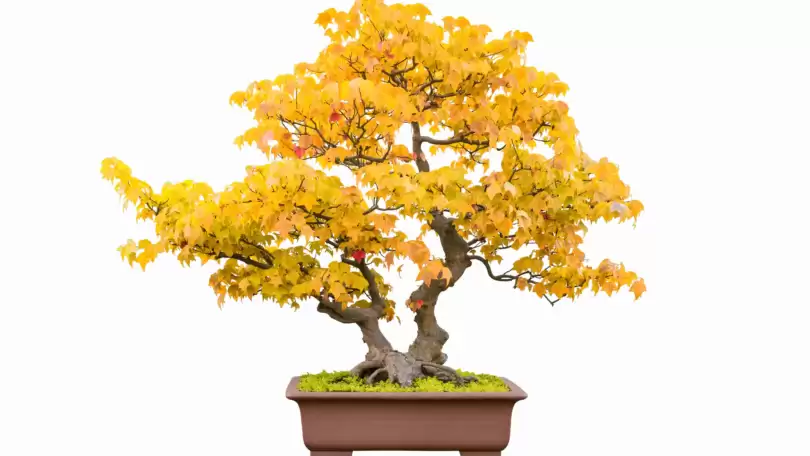A Full Guide to Creating Beautiful Bonsai maple tree

Introduction
The art of bonsai-ing Bonsai maple tree trees is a lot of fun. A bonsai maple tree can be shaped in a variety of ways, but informal upright, twin trunk, groups, clump, broom, and weeping are among the most popular options.
Pruning done correctly promotes faster, more complete healing, and eventually disappears completely.
From the tiniest stems to the large’s branches, this method can be applied. It can also be used to create a symmetrical bonsai tree that grows evenly.
How To Make a Bonsai Tree of Bonsai maple tree
If you are into plants and gardening then transforming a Bonsai maple tree or scientifically known as the Acer palmatum to a bonsai tree is an amazing hobby.
These are the type of trees which are perfect and ideal for bonsai growing.
The beauty of this small maple tree is that it will also grow the same way as the normal bigger version of the tree.
The bonsai maple tree will also change its colors as the season changes especially in the mesmerizing colors autumn colors, and you will witness this in your own garden.
This is the reason why the Bonsai maple tree is a famous choice of bonsai species among bonsai enthusiasts. Bonsai maple tree trees are very decorative, colorful and ornamental foliage.
Maple trees are deciduous types of small trees, that has odd numbers and pointed leaves.
Normally, it has 5 to 11 pointed leaves and this depends on the genus and species of the maples. You can usually find maples in countries like Japan, China, and Korea.
Growing your maple bonsai tree only requires you to prepare few things in order to be successful. But most importantly, your passion and interest in growing bonsai should be there.
Step-by-Step Guide
Ideally, during the early summer, you can remove a softwood cutting of the maple cultivar of your choice. This is done because maple trees are much easier to cultivate if it comes from cuttings.
Step #1:
To start, choose a branch of the maple tree that looks appealing by checking its shape. The branch of the tree should be around the diameter of your little finger to be considered ideal for cutting.
There are so many cultivars options of the Bonsai maple tree. You must choose according to your heart’s desire or your passion. There are some bonsai growers who wanted to grow larger types compared to others, while some kind of bonsai sport a rough bark, and others will need grafting.
You might want to remind yourself that the Bonsai maple tree which is red-leafed cultivars have a tendency to develop a weak root system and are commonly grafted from the other rootstocks.
Except if you know how to make a graft or there is someone knowledgeable that can help you, this is suggested in order to refrain from the red-leafed cultivars until such a time that you have gained more experience.
Step #2:
It is suggested by bonsai growers that you take several cuttings. In this way, you get an assurance that at least one will take well because there are times that the roots are weak, might have rotten or simply just do not form.
You have to make a cut around the base of the branch, this is where the roots will soon grow. Start with a circular cut through the bark. Then into the hardwood inside it. Then make a second cut in about two branch widths just below the very first cut.
Then connect the two cuts by making a straight vertical cut in the middle to connect the first two cuts. Remove the bark in between the first two cuts. In this scenario, the bark could be peeled off easily. You have to ensure that none of the green layer beneath the bark or the cambium layer is left.
Step #3:
Establishing the roots of your Bonsai maple tree. Using a rooting hormone, you have to sprinkle it on the top cut or you can also wipe it using a rooting gel.
Then cover that area with wet sphagnum moss, and then wrap it this time using a plastic and secure it in place with a tie. Make sure to always keep the moss wet. Just after several weeks, the roots should be visible through the plastic covering.
The alternative is to put the branches in a gritty and good quality compost. Always keep the compost medium moist or wet.
Within 2 to 3 weeks, you can expect now that the roots will start to form, provided that the stock taken is well maintained, healthy and keep in warm and moist conditions.
Step #4:
The process of planting your Bonsai maple tree tree. This time separate the tree. Re-move your new tree by cutting it off just below the new roots. The indicator is when the roots would start to grow thick and turn to brown.
8) Transplanting Tips The successful transplanting of a Bonsai maple tree tree is based on several factors, which include the following:
- size of the bonsai tree to be trans-planted.
- age of your bonsai tree.
- its overall health and condition of the roots.
- right timing.
Size of Your Bonsai Maple Tree
This is the most important factor whether or not your bonsai tree will be able to survive a trans-plant. Any size bonsai tree can be moved if the root system is undamaged during the process of transplanting.
For instance, the root system of an old and mature 6 to 8 ft Crimson Queen Bonsai maple tree, that is allowed to develop naturally without restrictions can spread out over 12 ft wide and up to 3 ft deep.
It is a possible huge root ball and you probably cannot handle with having the right equipment. On the other hand, a 3 to a 4-year-old bonsai tree, 3 ft tall and wide. this is a size a homeowner can move only requiring some help.
Generally, a bonsai tree with a trunk caliper of less than an inch can be moved with a 12 to 18 in the root ball. It weighs about 50 to 80 lbs. and grows tall and wide.
A 1 to 2 in caliper tree would require an 18 to 24 in root ball that weighs about 80 to 150 lbs., and a 2 to 3 in caliper tree with a 24 to 30 in root ball that weighs about 150 to 300 lbs.
Age of Your Bonsai Tree
Age is also an important factor to consider because the older your bonsai tree is, the further away from the bonsai trunk the feeder roots are situated. Basically, the root tips are the parts of your bonsai where the majority of water and essential nutrients are absorbed.
YouTube Bonsai
The part between the root tip of your bonsai and the trunk is for structural support, doing very little to keep your bonsai plant nourished.
The older your bonsai is, and the larger it is, the larger the root ball, having adequate viable root tips to continue to supplying water and nutrients to your Bonsai maple tree.
Overall, Health and Condition of the Root System
A healthy bonsai tree has a better root system and more likely surviving a transplant. A bonsai tree that looks sick likely has a compromised root system. When a tree is under stress due to drought or heat, some of its roots are viable and can be re-moved, resulting in its death.
When it’s right
The right moment is crucial. Bonsai trees should be transplanted in the late winter or early spring before they break bud. When the tree’s roots are weakened, it will take the smallest amount of time for the earth to warm up enough for new roots to emerge.
When digging a bonsai, it’s a good idea to cut portions of the roots so that the root ball is set back and new leaves don’t spring up soon. It gives your bonsai tree more time to establish its root system before it has to support all of the freshly growing leaves.
Tips for Successful Transplants
While transplanting bonsai trees, you should only cut back around 25 percent of the tree’s canopy. The tiny root system of your bonsai tree is less stressed as a result.
In addition, When transplanting a bonsai tree, add a little amount of nitrogen fertilizer and a root stimulant to aid in the tree’s growth and survival. A third tip is to keep the soil moist but not soggy in order to stave off the fungus that might cause bud rot.
If you keep the soil too damp, you’ll end up with weak roots because the roots don’t need to grow. Stress will set in faster on account of the tree’s weakened root structure, which will lead to a reduced overall survival rate.
More Info About Most Colorful Bonsai Maple Tree
It’s Time to Re-Pot Your Bonsai maple tree
After 10 years, you should re-pot young Bonsai maple tree every year or two. Repotting established plants every two to three years is recommended.
Because roots grow so quickly, it is possible to severely prune them while re-potting in the spring. Younger bonsai, in particular, benefit greatly from having up to half of their root length removed.
The shallow root systems of Japanese plants allow them to be planted in a shallow pot while still al-lowing for rapid root growth.




1 Comment